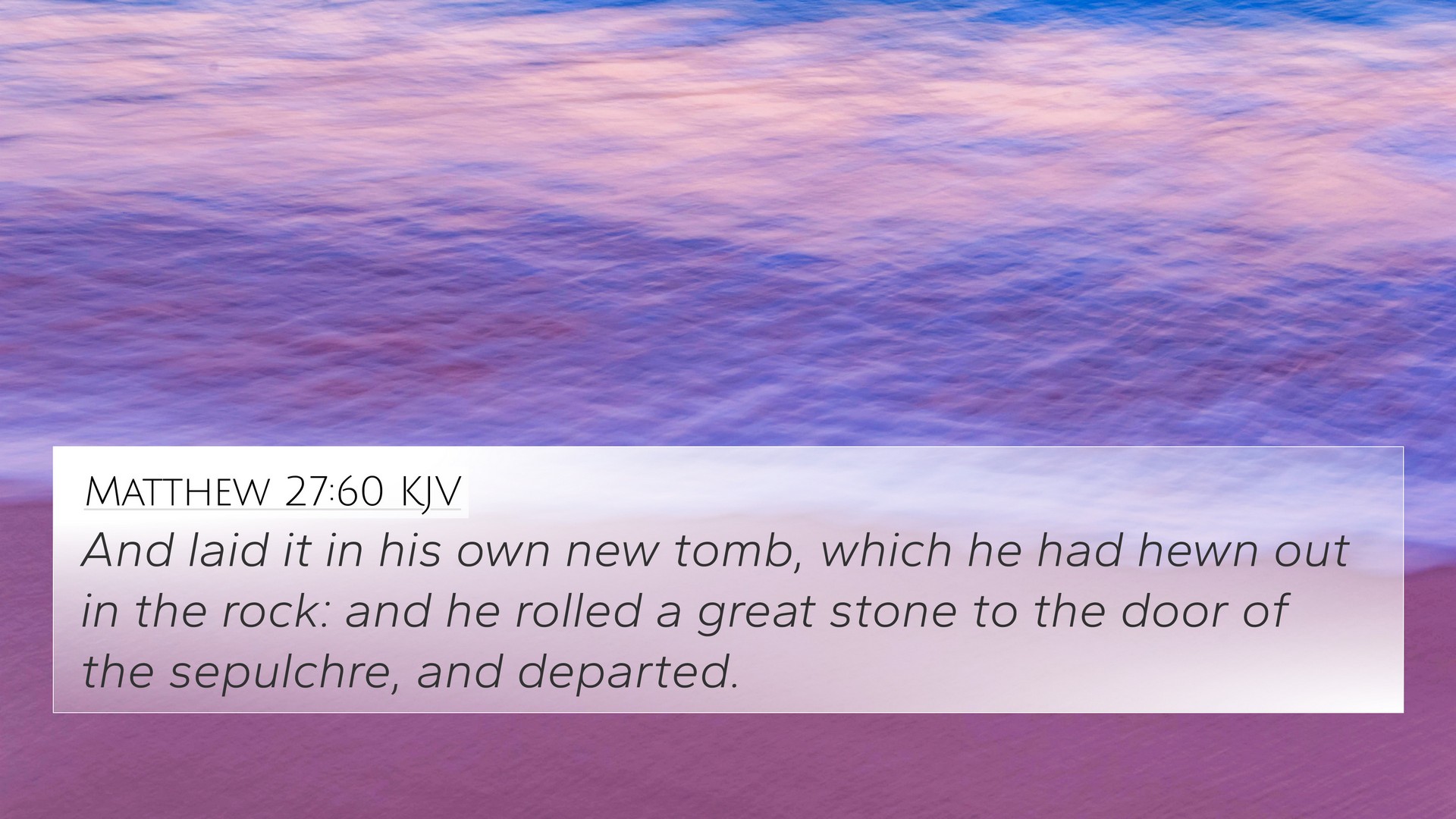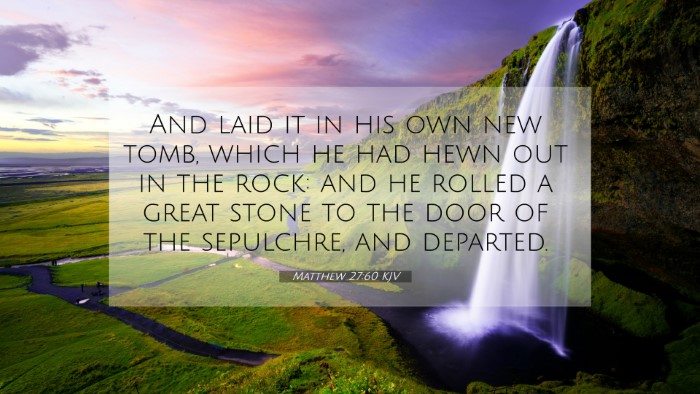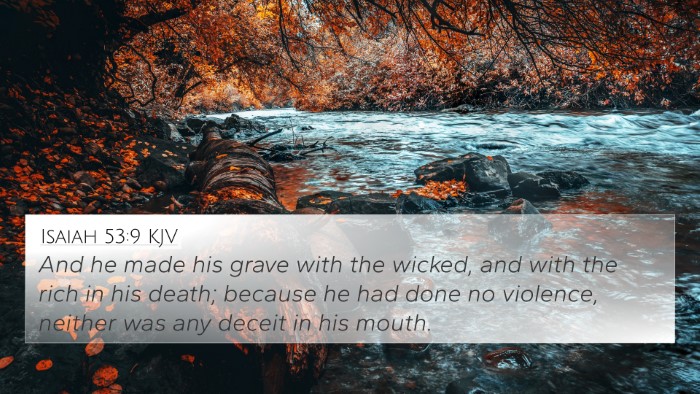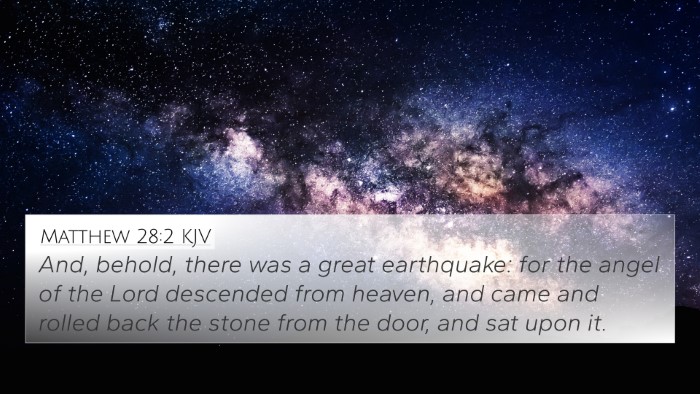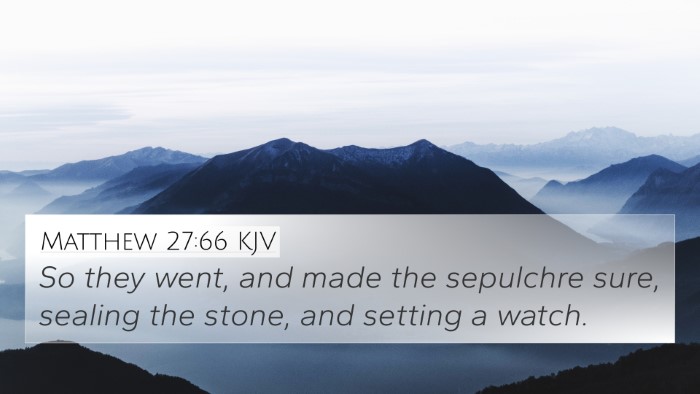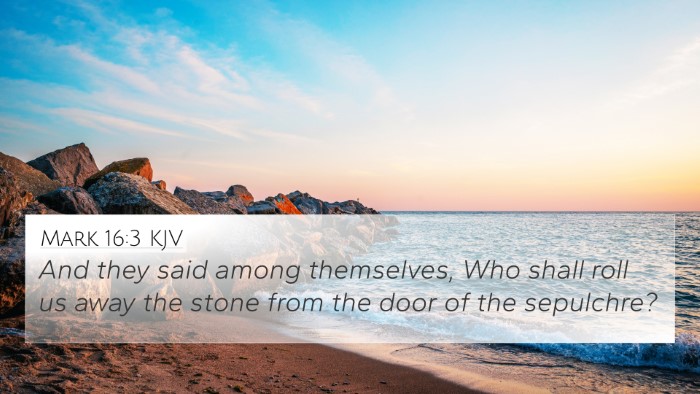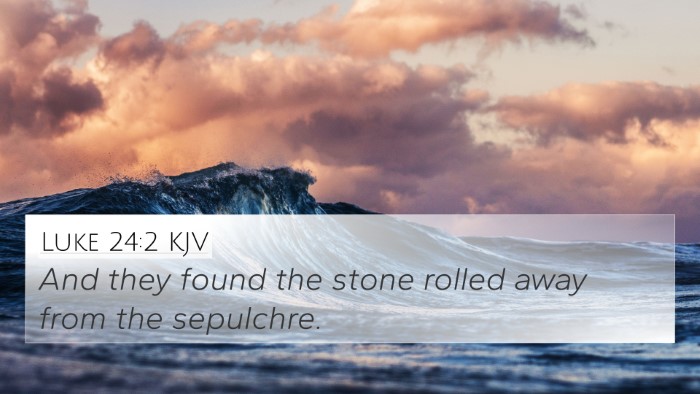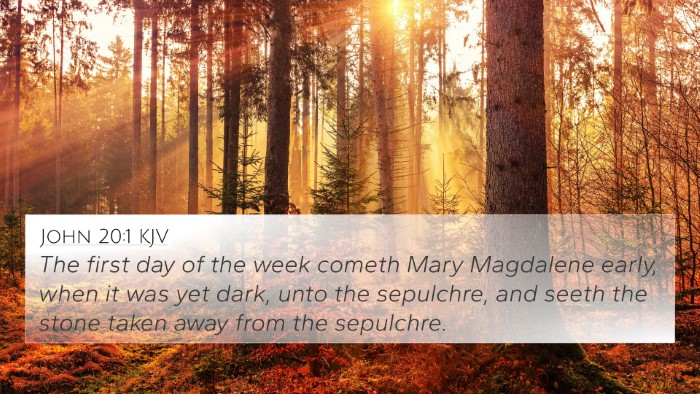Understanding Matthew 27:60
Matthew 27:60 states, "And laid it in his own new tomb, which he had hewn out in the rock: and he rolled a great stone to the door of the sepulchre, and departed." This verse captures vital elements of Jesus' burial after His crucifixion. The significance of the tomb, the stone, and Joseph of Arimathea’s actions is profound and layered with theological insights.
Insights from Public Domain Commentaries
Commentaries by Matthew Henry, Albert Barnes, and Adam Clarke provide a deeper look into the meaning of this verse:
- Matthew Henry: Henry emphasizes the care Joseph of Arimathea took in ensuring Jesus received a decent burial. This act underscores not only Joseph’s faith but also fulfills the prophecy concerning the Messiah's burial in a rich man's tomb (Isaiah 53:9). Joseph's actions reflect his respect and reverence for Jesus.
- Albert Barnes: Barnes points out that laying Jesus in a new tomb was a fulfillment of prophecy, showcasing God's orchestrating events in a majestic way. The mention of the stone signifies the finality of Jesus’ death to those unaware of the resurrection that was to come.
- Adam Clarke: Clarke discusses the logistical aspects of the burial, indicating that a new tomb indicates preparation for the dead, while the rolling away of the stone is a vivid image of both separation and sealing, which adds dramatic tension to the forthcoming resurrection narrative.
Thematic Connections and Cross-References
This verse connects with several other important biblical themes and verses:
- Isaiah 53:9: “And he made his grave with the wicked, and with the rich in his death.” This prophetic insight foreshadows the precise circumstances of Jesus' burial.
- John 19:40: Details how Jesus was wrapped for burial, emphasizing the respect accorded to His body.
- Mark 15:46: Provides a parallel account of Joseph's actions, reinforcing the importance of this moment in the Gospel narrative.
- Luke 23:53: Relates how Joseph took the body down from the cross, again highlighting his critical role in Jesus' burial.
- Matthew 27:57: Introduces Joseph of Arimathea, elucidating his character as a disciple of Jesus. This context is vital for understanding his actions in verse 60.
- Romans 6:4: Connections to baptism and resurrection show how burial signifies death, linking the events of Jesus' burial with the spiritual implications for believers.
- 1 Corinthians 15:4: Paul emphasizes the importance of Jesus’ burial as part of the Gospel narrative, supporting the significance of the event mentioned in Matthew.
Bible Verse Cross-References and Interpretations
In addition to the verses mentioned, the following offers further insights on related themes and cross-references:
- Matthew 12:40: Jesus refers to Jonah’s three days in the belly of the fish, connecting His own time in the tomb to the divine plan and resurrection.
- Genesis 22:13: The ram caught in the thicket serves as a typological symbol, reflecting themes of sacrifice and divine provision, parallel to Jesus' ultimate sacrifice.
Tools for Bible Cross-Referencing
To better study and understand the connections in scripture, consider using:
- Bible Concordance: A valuable resource for locating scriptures and understanding their context.
- Bible Cross-Reference Guide: A study tool designed to help in linking different Bible texts thematically.
- Cross-Reference Bible Study: Methods that encourage deeper exploration of themes and motifs across various scripture passages.
Practical Applications
Understanding Matthew 27:60 and its cross-references aids in:
- Preparing sermons that reflect on the themes of sacrifice, burial, and resurrection.
- Encouraging deeper personal study by identifying connections and parallels.
- Helping in discussions about the significance of Jesus' death and burial in the context of his resurrection and the entirety of the Gospel message.
Conclusion
The burial of Jesus as depicted in Matthew 27:60 is more than a mere event; it carries with it profound theological implications reflective of God’s redemptive plan for humanity. As you explore this verse, and weave together the insights from various commentaries and cross-references, you engage in a rich tapestry of inter-Biblical dialogue that sheds light on the interconnected stories within scripture.
